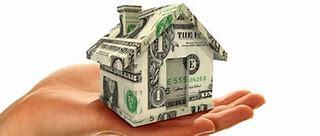
Home sellers may hear the term "adjusted basis" during the sales process. In the world of real estate, this term is related to the sale of real estate: when you sell your house, the difference between the sale price and the adjusted basis determines the tax you owe. Before determining your gain or loss on the sale, you need to consider factors such as depreciation or the money you invested in improving the property before selling it.
Adjusted basis and how it's determined
Improvements: Any improvements made to the property after the purchase date, such as remodeling or renovation, increase the adjusted basis. The cost of the improvements should be added to the original cost basis.
Capital expenditures: Capital expenditures are costs that increase the value or prolong the useful life of the property. Examples include a new roof or adding a deck. These expenses can also increase the adjusted basis.
Depreciation: If the property was used for rental or business purposes, depreciation could be taken as an expense over time. This reduces the taxable income but does not reduce the cost basis. The amount of the depreciation taken must be subtracted from the adjusted basis.
To calculate the adjusted basis, start with the original cost basis, add any improvements and capital expenditures, and subtract any depreciation. The result is the adjusted basis of the property.
It is important to keep accurate records of all expenses and improvements made to the property to ensure that the correct adjusted basis is calculated. This will help minimize the tax liability when the property is sold.
What increases the basis?
The basis of an asset, such as real estate, can be increased by the following:
Improvements: Any improvements made to the property after the purchase date, such as remodeling or renovation, increase the basis. The cost of the improvements should be added to the original cost basis.
Capital expenditures: Capital expenditures are costs that increase the value or prolong the useful life of the property. Examples include a new roof or adding a deck. These expenses can also increase the basis.
Transfer taxes: If transfer taxes were paid when the property was acquired, they could be added to the basis.
Casualty or theft losses: If a casualty or theft damaged the property, the amount of the loss could be added to the basis, subject to limitations.
Capital improvements: Capital improvements are permanent changes to the property that increase its value or extend its useful life. Examples include adding a room, a deck, or a new roof. The cost of capital improvements can be added to the basis.
It is important to keep accurate records of all expenses and improvements made to the property to ensure that the correct basis is calculated. This will help minimize the tax liability when the property is sold.
What decreases the basis?
The basis of an asset, such as real estate, can decrease due to several factors. Here are some of the most common:
Depreciation: If the property was used for rental or business purposes, depreciation could be taken as an expense over time. This reduces the taxable income but does not reduce the cost basis. The amount of the depreciation taken must be subtracted from the basis.
Casualty Loss: If the property experiences a casualty loss, such as fire or natural disaster, the cost of repairs can be deductible from the basis.
Foreclosure: If the property is foreclosed, the debt forgiven by the lender can be considered taxable income and reduce the basis.
Transfers: If the property is transferred as a gift or inheritance, the basis may be adjusted to the property's fair market value at the time of transfer.
Amortization: If the property was acquired with a loan, the amortization of the loan can reduce the basis over time.
It is important to keep accurate records of all expenses and improvements made to the property and any events that may affect the basis to ensure that the correct adjusted basis is calculated. This will help minimize the tax liability when the property is sold.
Adjusted basis example
Here is an example of how to calculate the adjusted basis of a property:
Original cost basis: $200,000
Improvements: $40,000 (new roof, kitchen remodel, etc.)
Depreciation taken: $20,000
To calculate the adjusted basis:
Start with the original cost basis: $200,000
Add the cost of improvements: $200,000 + $40,000 = $240,000
Subtract the amount of depreciation taken: $240,000 - $20,000 = $220,000
So, the adjusted basis of the property is $220,000. When the property is sold, this adjusted basis will be used to calculate the capital gain or loss, which will be subject to tax. If the sale price is greater than the adjusted basis, the difference will be considered a capital gain, and if the sale price is less than the adjusted basis, the difference will be considered a capital loss.
Bottom Line
In conclusion, the adjusted basis is a critical component of real estate tax calculations. It is the starting point for determining the capital gain or loss when a property is sold. Understanding how the adjusted basis is calculated and what factors can affect it can help taxpayers minimize their tax liability and make informed decisions about buying and selling real estate. It is always a good idea to consult with a tax professional for guidance on specific situations and to ensure accurate calculations and compliance with tax laws.
FOR MORE INFORMATION ON HOW TAXES MADE EZ INC CAN BEST HELP YOU WITH YOUR TAX FILING NEEDS, PLEASE CLICK THE BLUE TAB ON THIS PAGE.
THANKS FOR VISITING.
Taxes Made EZ Inc